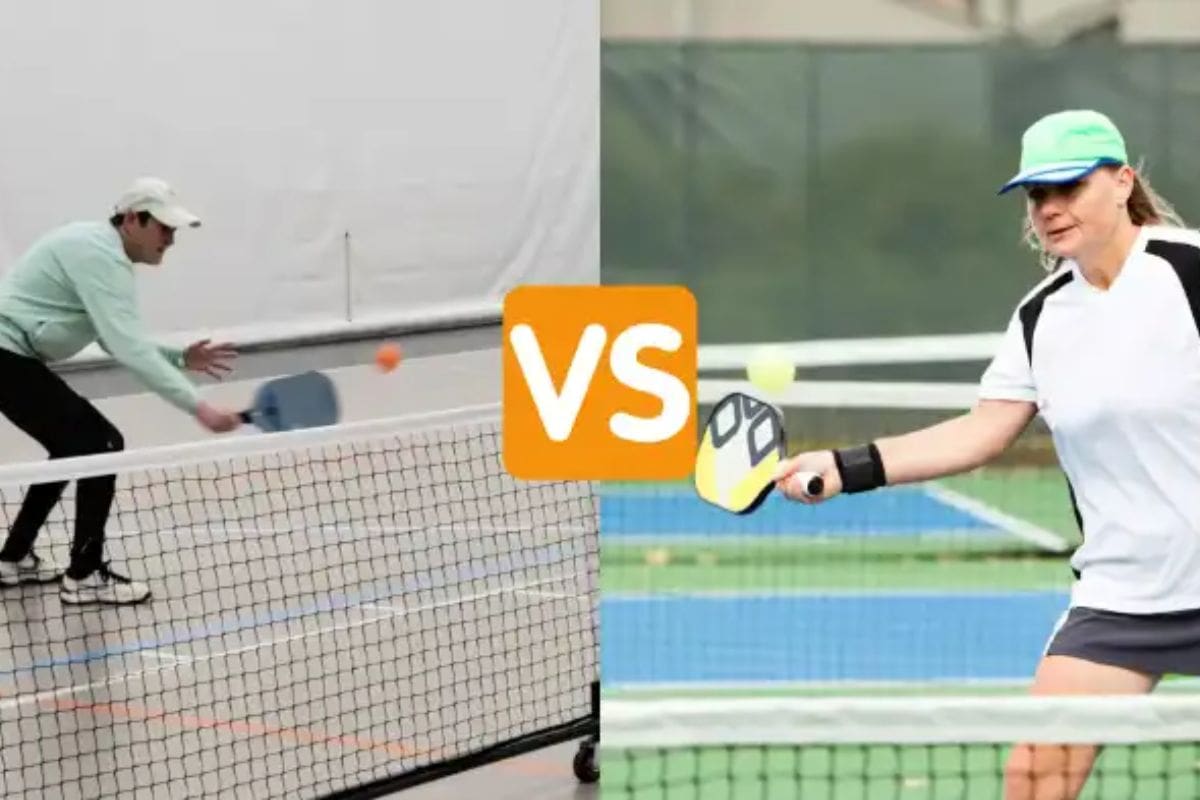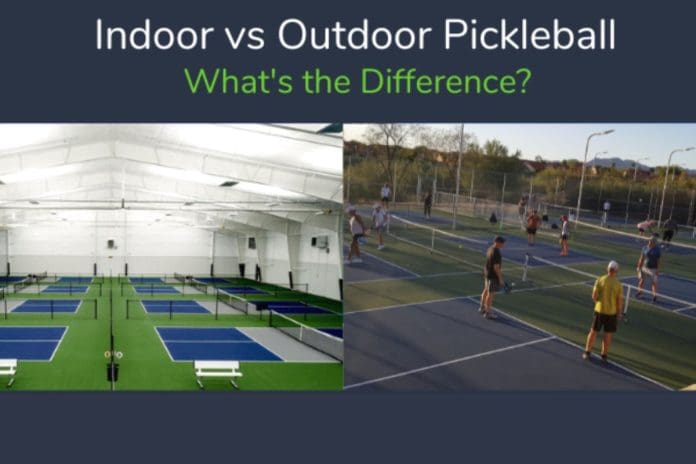Difference Between Indoor And Outdoor Pickleball: Pickleball, a sport growing in popularity across the United States, offers a unique experience whether played indoors or outdoors. The choice between these settings brings distinct advantages and challenges that impact gameplay significantly.
Indoor Pickleball
Indoor pickleball often takes place on basketball courts or specialized sport courts, providing a controlled environment free from weather interference. This consistency is a boon for players, allowing focused attention on strategy and execution without the distractions of wind or sun glare. Facilities are well-lit, ensuring visibility remains constant throughout play, a crucial factor for competitive and recreational players alike.
Moreover, indoor surfaces like sport courts offer cushioning that reduces impact on joints, enhancing player comfort during prolonged sessions. However, the surface can pose challenges with inconsistent bounces, affecting gameplay unpredictably. Choosing the right pickleball, optimized for indoor surfaces, is essential to maintain game quality and enjoyment.
Outdoor Pickleball
Conversely, outdoor pickleball introduces elements that add a layer of unpredictability to the game. Weather conditions such as temperature, wind, and sunlight become pivotal factors influencing player performance. The wind, in particular, can drastically alter strategy and shot selection, forcing players to adapt continuously throughout the match.
Lighting conditions outdoors vary, impacting visibility especially during early mornings or late evenings. Shadows and glare can affect gameplay, necessitating adjustments like wearing hats or sunglasses for better focus.
Despite these challenges, outdoor courts offer diverse surfaces—such as concrete, asphalt, or tennis courts—that alter ball behavior and pace, adding strategic depth to matches. Players must acclimate to these variations to excel, making outdoor pickleball a test of adaptability and skill.
| Aspect | Indoor Pickleball | Outdoor Pickleball |
| Playing Surface | Typically on basketball courts or sport courts, providing consistent, cushioned surfaces that reduce joint impact and offer controlled bounces. | Varies widely from concrete to tennis courts, influencing ball bounce and pace, requiring players to adapt to different playing conditions. |
| Weather Conditions | Controlled environment free from wind, rain, or sun glare, allowing consistent play conditions and visibility. | Weather-dependent; impacts play with wind, temperature, and sunlight affecting strategy and shot selection. |
| Lighting | Well-lit facilities ensure consistent visibility, eliminating shadows and glare that could affect gameplay. | Natural and artificial lighting variations affect visibility, particularly during early morning or evening play, necessitating adjustments like hats or sunglasses. |
| Ball Type | Uses lighter balls with larger holes optimized for smooth indoor surfaces, ensuring optimal performance and playability. | Heavier, more durable balls designed to withstand outdoor elements and rougher surfaces, providing stability and predictability in varying conditions. |
| Environmental Factors | Shielded from external elements like wind, rain, and sun, allowing players to focus solely on the game without distractions. | Requires adaptation to changing weather conditions, influencing gameplay strategy and shot execution. |
| Surface Impact on Play | Offers consistent ball bounce but may have dead spots or irregularities affecting play unpredictably. | Surface type (concrete, asphalt, etc.) impacts ball behavior and speed, contributing to strategic gameplay adjustments. |
| Acoustics | Generally controlled, with minimal noise interference, although sound can be affected by the indoor environment. | Outdoor settings can be noisier, impacting the acoustics of the game and potentially distracting players with auditory sensitivities. |
| Player Comfort | Regulated temperatures provide comfortable playing conditions, often complemented by amenities like nearby dining options. | Encourages outdoor recreation with fresh air and natural surroundings, but players may need to endure varying weather conditions. |
| Strategy and Adaptability | Focuses on consistent play and strategic execution, ideal for honing skills without external interruptions. | Requires adaptive strategies to cope with weather changes, wind patterns, and varying court surfaces, enhancing versatility and tactical thinking. |
Whether indoors or outdoors, each setting presents unique opportunities and challenges for pickleball enthusiasts. While indoor courts offer consistency and comfort, outdoor play demands resilience and adaptability in the face of changing conditions. Ultimately, the choice between the two depends on personal preference, with both environments offering ample chances for socializing, exercise, and competitive play.


